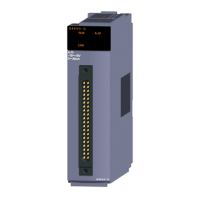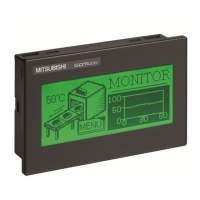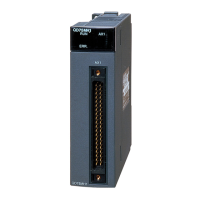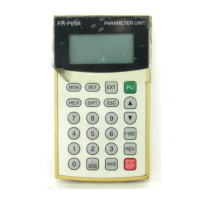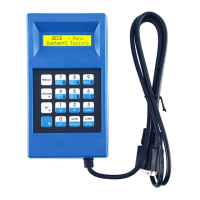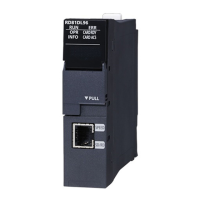3 - 69
3.4 Buffer Memory
3.4.20 CH[ ] rate alarm warning detection period (Un\G118 to Un\G125)
3
SPECIFICATIONS
3.4.20 CH
[ ]
rate alarm warning detection period (Un\G118 to
Un\G125)
(1) Set a period, with which the varying rate of the digital output value will be checked, on
a channel basis.
(2) To validate the setting, the operating condition setting request (Y9) must be turned
ON/OFF. (Refer to Section 3.3.2.)
(3) The setting range is 10 to 5000ms.
The value can be set in 1ms increments, but the first digit is rounded down and the
value is processed in 10ms increments.
(4) When time averaging or count averaging has been specified for averaging process
specification, set the rate alarm warning detection period as a multiple of the time
averaging or count averaging conversion period.
(5) The default setting is 0ms.
(6) Refer to Section 3.2.4 for details of the rate alarm.
(1) If a value outside the above setting range is written to a channel, an error
occurs, and an error code is stored into the Error code (Un\G19). The Error
flag (XF) turns ON, and the time or count averaging or rate alarm processing
is performed based on the setting before the error detection.
(2) Since the default setting is 0, change the setting.
(3) If the upper limit value and lower limit value settings of the rate alarm are
small, the warning output may turn ON due to overreaction to disturbance or
like. This overreaction can be avoided by increasing the setting of the rate
alarm warning detection period.
Example) When the number of channels is 5, and if the count value set for the
count averaging is 10, the conversion cycle for count averaging is:
10 (times) 5 (CH) 10 (ms) = 500 (ms)
Therefore, set a multiple of 500, such as 1500 or 3000, to the rate
alarm warning detection period.

